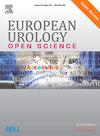Assessing the Cause of Death for Men with Prostate Cancer Using Official Mortality Statistics or a Dedicated Cause of Death Committee: Results from 30-year ERSPC Rotterdam Data
IF 3.2
3区 医学
Q1 UROLOGY & NEPHROLOGY
引用次数: 0
Abstract
For men with prostate cancer (PCa) within the European Randomized Study of Screening for Prostate Cancer (ERSPC), the cause of death is determined by a Cause of Death Committee (CODC) that evaluates all medical records using a fixed algorithm. The aim of this study was to compare the classification of PCa-specific mortality (PCSM) between the CODC and Statistics Netherlands. We calculated the sensitivity (PCSM agreement divided by total PCSM deaths according to the CODC) and specificity (agreement for other-cause mortality [OCM] divided by total OCM deaths according to the CODC) using the last 21-yr follow-up data from ERSPC Rotterdam. For the core age group (age 55–69 yr at randomization; n = 1732), the sensitivity was 86% (95% CI 83-89) and specificity was 93% (95% CI 91-94), with no statistical difference between the youngest ages and the oldest ages. Extrapolation of our findings to 30 yr of follow-up would result in an expected risk reduction of PCSM of 30% using data from the CODC and 33% using official statistics in favor of screening. In conclusion, our results support the use of official statistics in determining the cause of death, without compromising the main outcome of ERSPC Rotterdam.
Patient summary
We compared the classification of prostate cancer death between a dedicated trial committee and official statistics in the Netherlands. We found that official statistics are an accurate representation in determining the cause of death.
使用官方死亡率统计数据或专门的死因委员会评估前列腺癌男性患者的死因:鹿特丹 ERSPC 30 年数据的结果
在欧洲前列腺癌筛查随机研究(ERSPC)中,男性前列腺癌患者的死因由死因委员会(CODC)确定,该委员会采用固定算法评估所有医疗记录。本研究旨在比较 CODC 和荷兰统计局对 PCa 特异性死亡率(PCSM)的分类。我们利用鹿特丹 ERSPC 最近 21 年的随访数据计算了灵敏度(根据 CODC,PCSM 一致性除以 PCSM 死亡总数)和特异性(根据 CODC,其他原因死亡率 [OCM] 一致性除以 OCM 死亡总数)。对于核心年龄组(随机化时年龄为 55-69 岁;n = 1732),灵敏度为 86%(95% CI 83-89),特异度为 93%(95% CI 91-94),最小年龄和最大年龄之间没有统计学差异。将我们的研究结果推断到 30 年的随访中,如果使用 CODC 的数据,则 PCSM 的预期风险降低率为 30%;如果使用官方统计数据,则筛查的预期风险降低率为 33%。总之,我们的结果支持在确定死因时使用官方统计数据,而不会影响鹿特丹 ERSPC 的主要结果。患者摘要我们比较了荷兰专门试验委员会和官方统计数据对前列腺癌死亡的分类。我们发现,官方统计数据在确定死因方面具有准确的代表性。
本文章由计算机程序翻译,如有差异,请以英文原文为准。
求助全文
约1分钟内获得全文
求助全文
来源期刊

European Urology Open Science
UROLOGY & NEPHROLOGY-
CiteScore
3.40
自引率
4.00%
发文量
1183
审稿时长
49 days
 求助内容:
求助内容: 应助结果提醒方式:
应助结果提醒方式:


